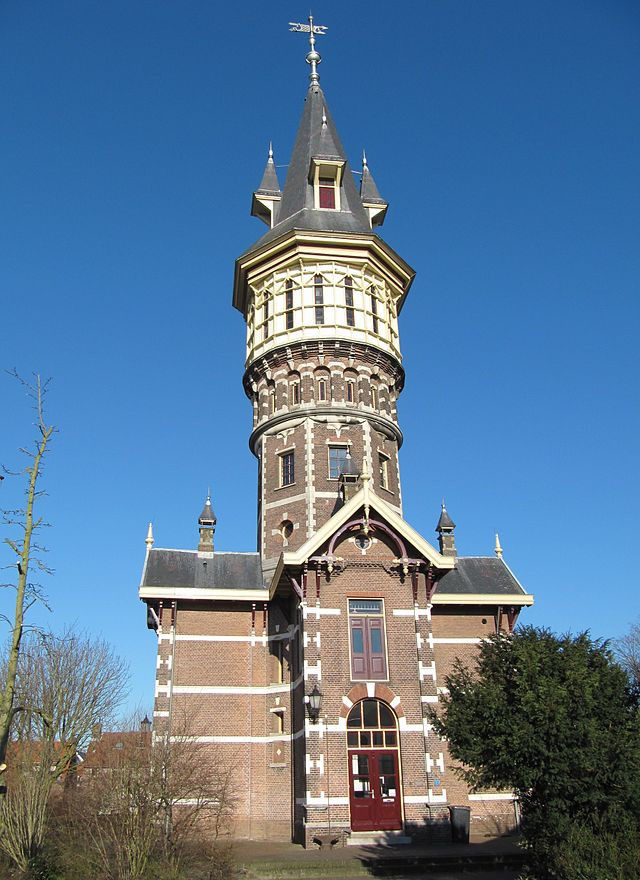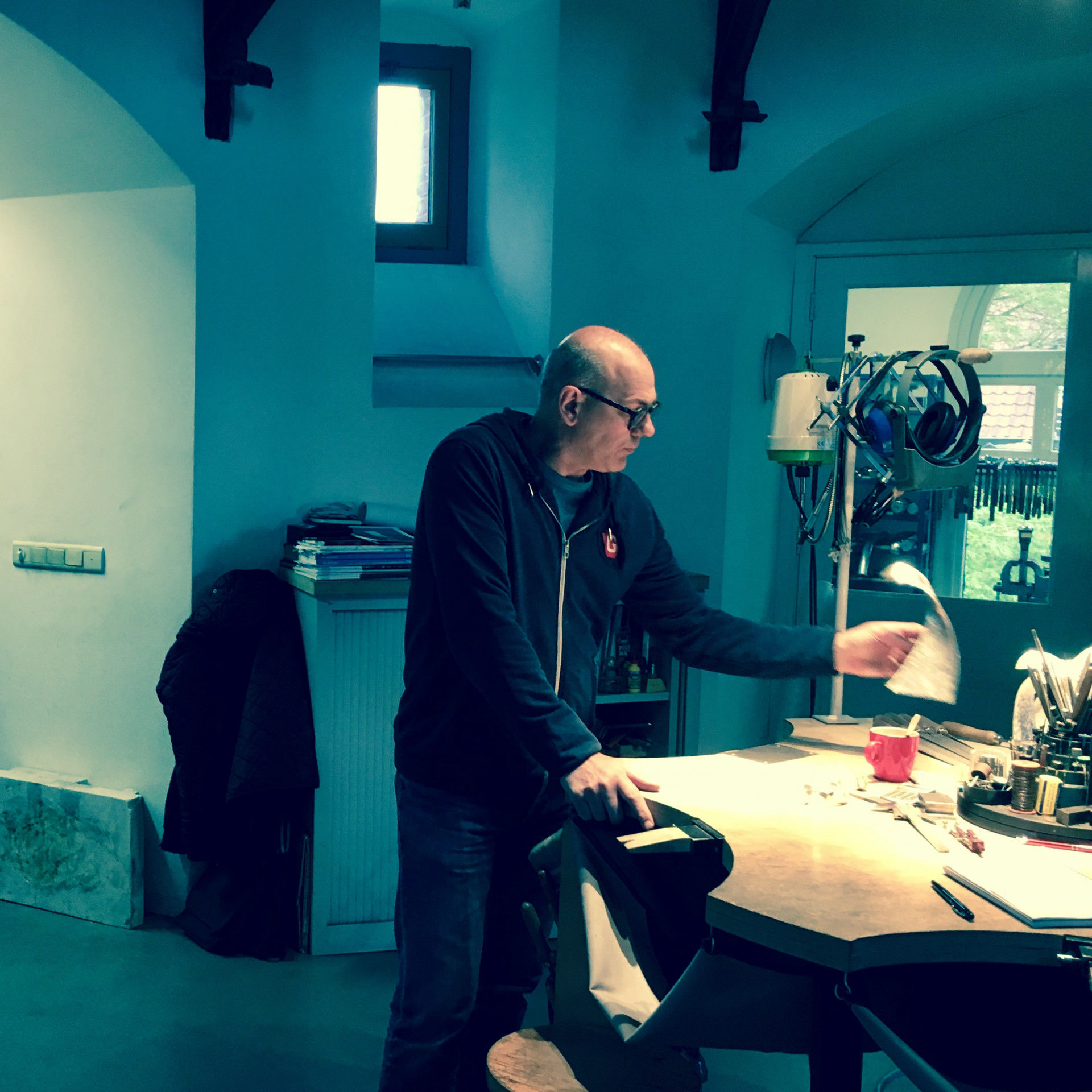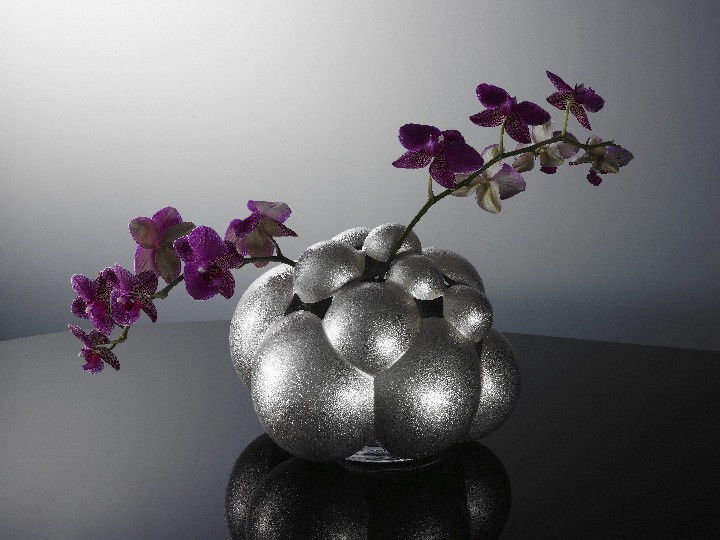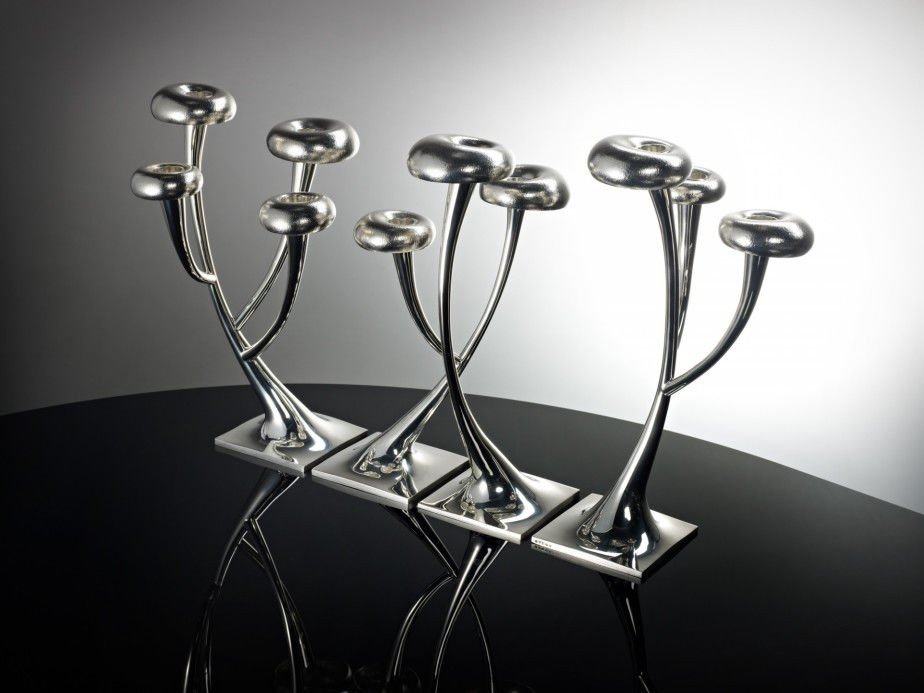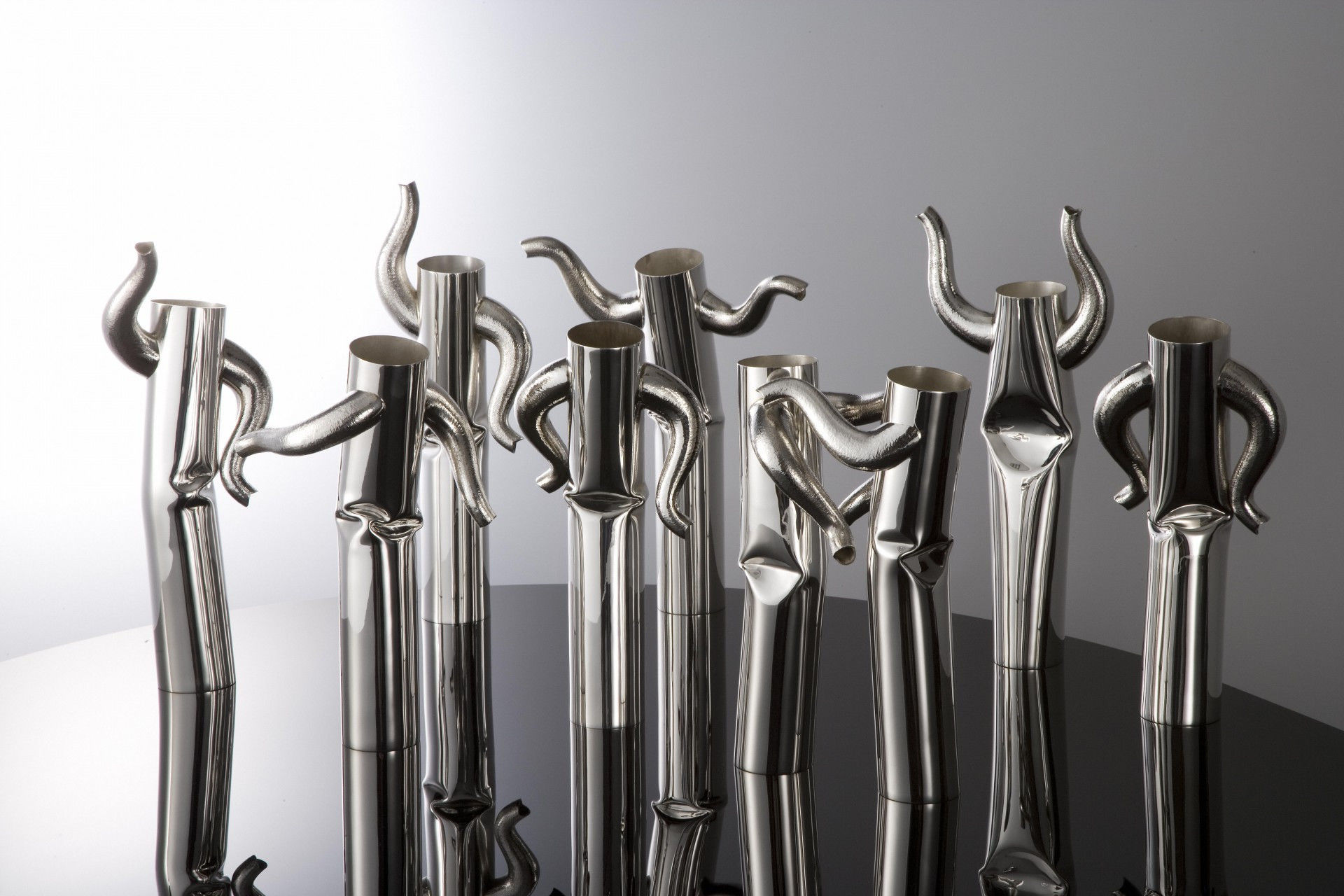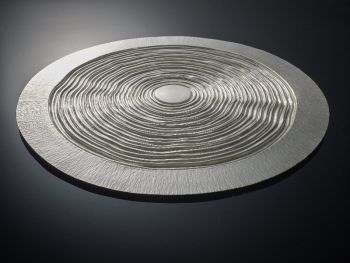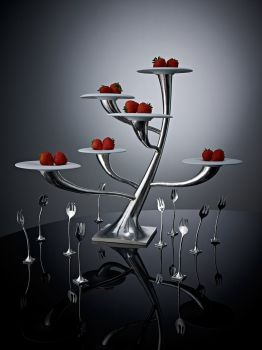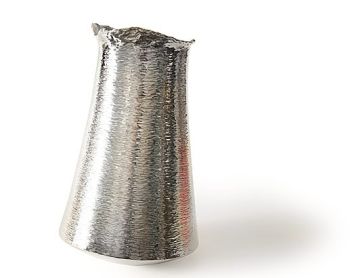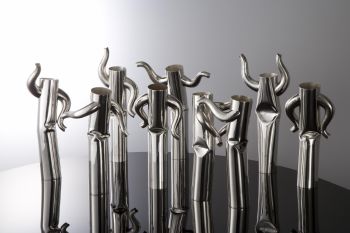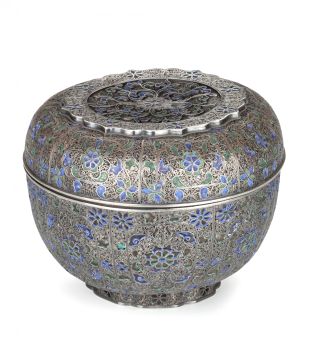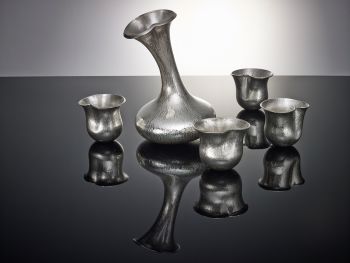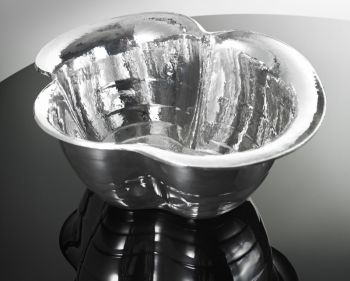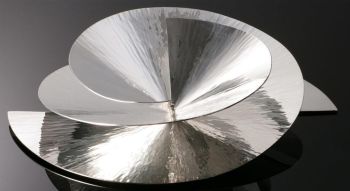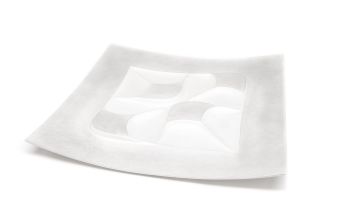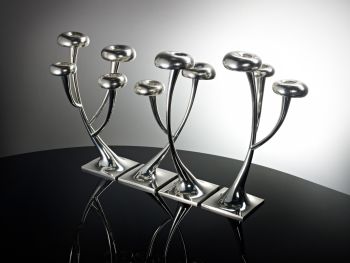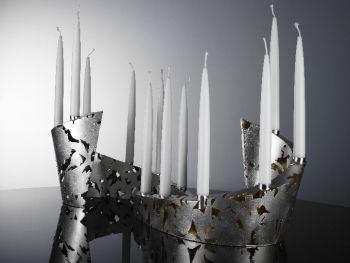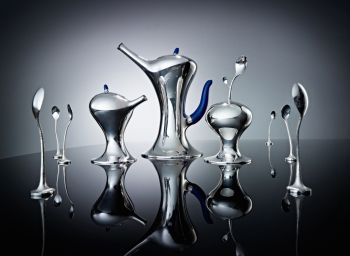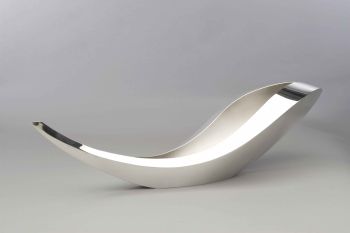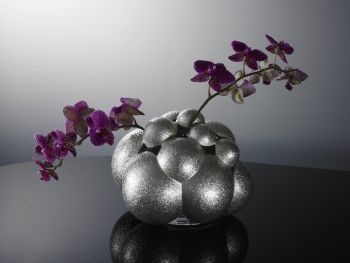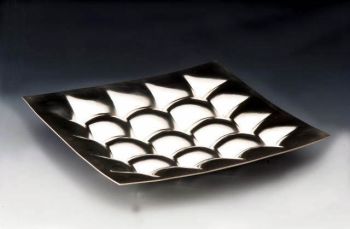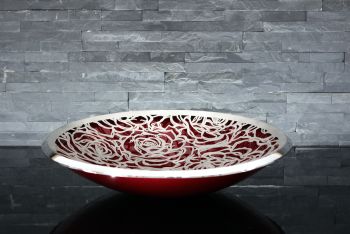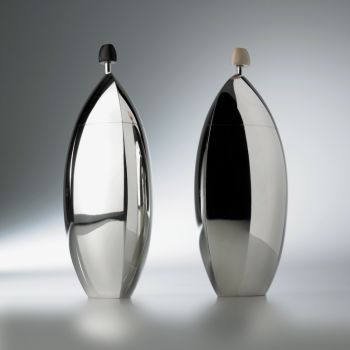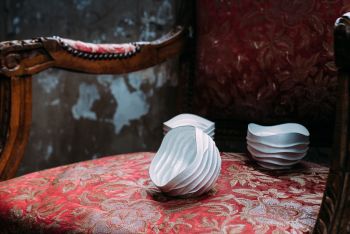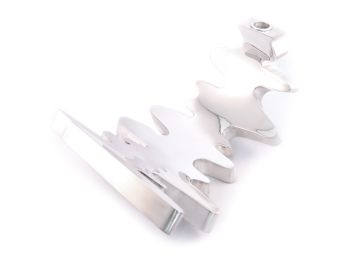Zilvergalerie de Watertoren: Paul de Vries’ Surprising Silver
The Dutch historic town of Schoonhoven, situated on the beautiful Lek River, is noted for its silver. Since the 17th-century silversmiths have been working in this so-called “Silver City”.
Nowadays, a number of silversmiths are active here, among them the talented silversmith Paul de Vries, whose studio with adjoining gallery called 'Zilvergalerie de Watertoren' is established in a monumental water tower on the outskirts of Schoonhoven (fig. 1). It was there, in his studio, that we enjoyed a pleasant conversation about his life and work (fig. 2).
1. Schoonhoven’s monumental water tower, dating from 1901.
Paul de Vries told me he initially wanted to become an actor. However, it was while attending the academy of dramatic art that he soon felt that his education was falling short of his expectations.
Encouraged by his friends, he decided to attend the Vakschool Schoonhoven (Vocational School Schoonhoven), a training institute for those wishing to pursue metalworking. At first he specialised in gold but quickly switched to silver which, according to a De Vries, was like “toying with pieces of Lego," as he described the process of moulding and bending metal as something “magical."
During his apprenticeship, the institute focused more on developing technique rather than design. After graduating from the Vocational School, he pursued product design at the Art Academy in Utrecht. It was the combination of craft and design which encouraged De Vries to develop his own personal style, and he soon began to make a name for himself.
De Vries was eventually given the opportunity to set up his studio in the Schoonhoven water tower in 1996, due to successful exhibitions in Rotterdam (Het Schielandshuis), The Hague and Ghent (Design Museum) during the 1980s and 1990s.
2. Paul de Vries in his studio, situated in the water tower.
Paul de Vries has emphasized that he is profoundly influenced by the organic forms of nature. For example, his Tulip Vase Tulipbulbs (2007, fig. 3) consisting of various spherical shapes melted together, could be read as a representation of cell division, while his Set of 4 Candle Stands “Grow & Glow” (2012, fig. 4) are shaped like mushrooms. De Vries' silver objects are, to a large extent, devoid of exuberant adornments.
An admirer of Bauhaus, a school of applied arts noted for its functionalism in architecture and industrial design, De Vries stresses the importance of simplicity in his designs, quoting Mies van der Rohe’s famous aphorism, “less is more”.
3. Paul de Vries, Tulip Vase Tulipbulbs, 2007.
While De Vries’ work is characterised by simple forms, it also conveys playfulness and theatricality. Although he studied at the academy of dramatic art only for a short period, theatre has remained an important source of inspiration in his work. He often compares his objects with “performers on stage," demonstrated in Funky Town Vases (2004, fig. 5).
The cylindrical vases are fashioned with swinging arms frozen in various poses, and seem to come to life: like performers on stage who might be dancing to funky beats. It may not be surprising that these fantastical objects, originating from the realm of the imagination, are influenced by surrealism, especially Salvador Dalí’s paintings, but also by Lewis Carroll’s bizarre and fanciful novel Alice’s Adventures in Wonderland (1865).
Although his handcrafted pieces do have an utilitarian function, their ornamental function is more important. “Silver objects should be decorative, they are like jewels ornamenting one's body," De Vries states convincingly. Silver is of particular importance at dinner: “A lavishly decorated dinner table with magnificent silverware adds another dimension to the experience of a meal: a piece of applied art simply adds something to it.”
4. Paul de Vries, Set of 4 Candle Stands “Grow & Glow, 2012. Silver, 34 x 50 x 24 cm.
When Paul de Vries starts with a new project, he lets himself be surprised and influenced by what he encounters, comparable to Alice in Lewis Carroll’s novel who meets by chance the most fantastic and absurd creatures, after falling through a rabbit hole.
De Vries has been experimenting with clay and metal, because he prefers three-dimensional objects to drawings. From these concepts, all kinds of marvellous ideas emerge which can be used for creating the final objects on larger scale.
5. Paul de Vries, Funky Town Vases, 2004. Silver, 30 x 12 cm.
One of Paul de Vries’ most prestigious projects was Royaltea (2012, header image), a fanciful tea set featuring a milk jug, teapot, sugar bowl and spoons. It was exclusively designed for the Dutch Design Exhibition in Oranienbaum Palace (Oranienbaum, Germany) which was opened by Queen Beatrix on the 26th of April 2012.
According to de Vries, Royaltea refers to the social-economic history of Oranienbaum Palace. Countess Henriette Catherine of Nassau, who built the palace in 1683, was an avid collector of porcelain, crystal glasses and silverware. As a result, numerous small-scale workshops established themselves there, producing all kinds of products, such as ceramics and silver, under the authority of the Oranienbaum Palace.
The remarkable protuberances on the teapot, milk jug and sugar bowl symbolise young leaves which could be read as a metaphor for the workshops emerging in this area. In addition, the majestic teapot in the centre symbolises Queen Beatrix, while the milk jug to the left represents the then crown prince Willem-Alexander and the sugar bowl to the right stands for Máxima Zorreguieta, the crown prince’s wife.
The “Royal Family” is surrounded by several spoons, symbolising the Dutch people, de Vries reveals. The silver components of the various objects were meticulously joined together, demonstrating no visible welds, an indication of de Vries' excellent craftsmanship.
Besides the spectacular Dutch Design Exhibition in Oranienbaum Palace, Paul de Vries’ work has been shown at the Gemeentemuseum, Den Haag (The Hague, The Netherlands) in 2016, the Schwäbisch Gmünd Museum im Prediger (Schwäbisch Gmünd, Germany) in 2015, the Dutch Silver Museum Schoonhoven (Schoonhoven, the Netherlands), the Design Museum Gent (Ghent, Belgium) and the Neue Pinakothek (München, Germany).
De Vries has also been participating in the reputable PAN Amsterdam fair for many years.
Header image: Paul de Vries, Royaltea, 2012. Silver and lapis lazuli, 24 x 10 cm. (Teaset, containing a teapot, milk jug and sugar bowl. Especially designed for the Dutch Design Exhibition in Oranienbaum Palace (Oranienbaum, Germany).


